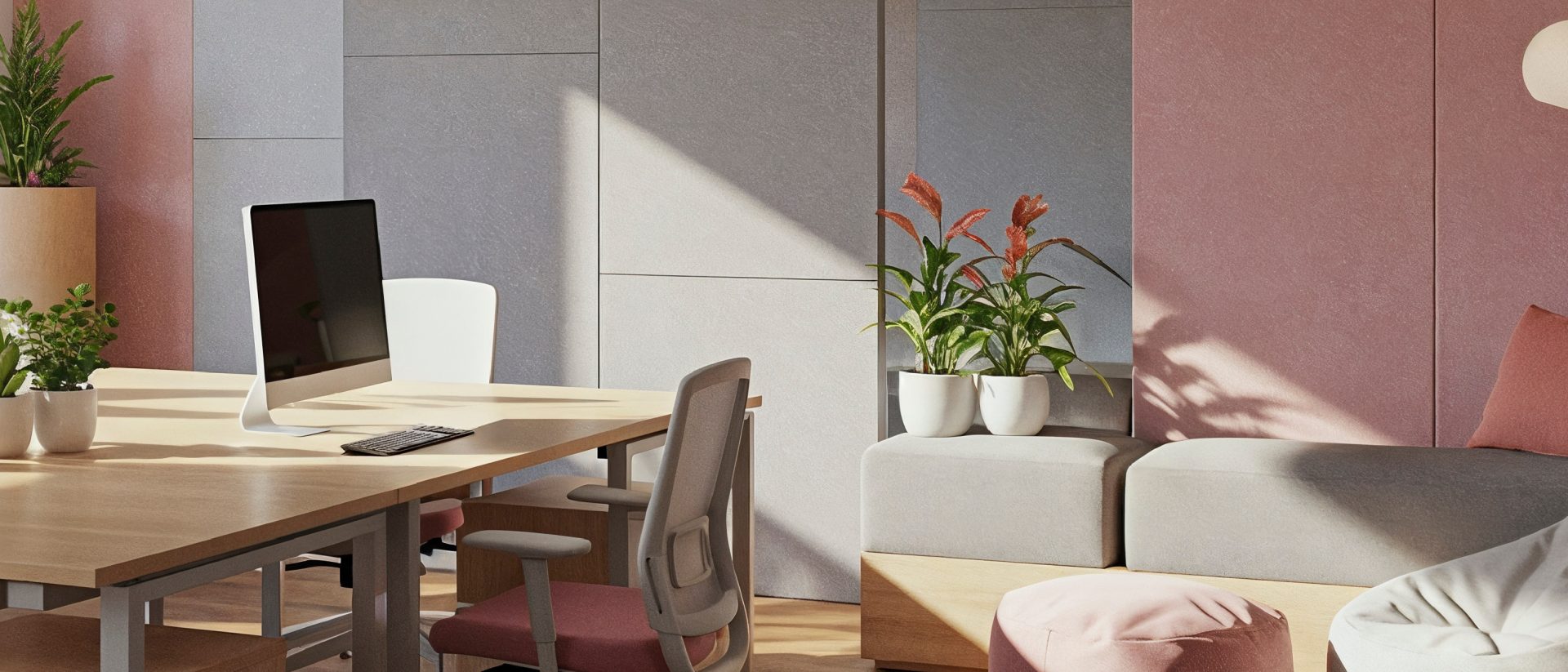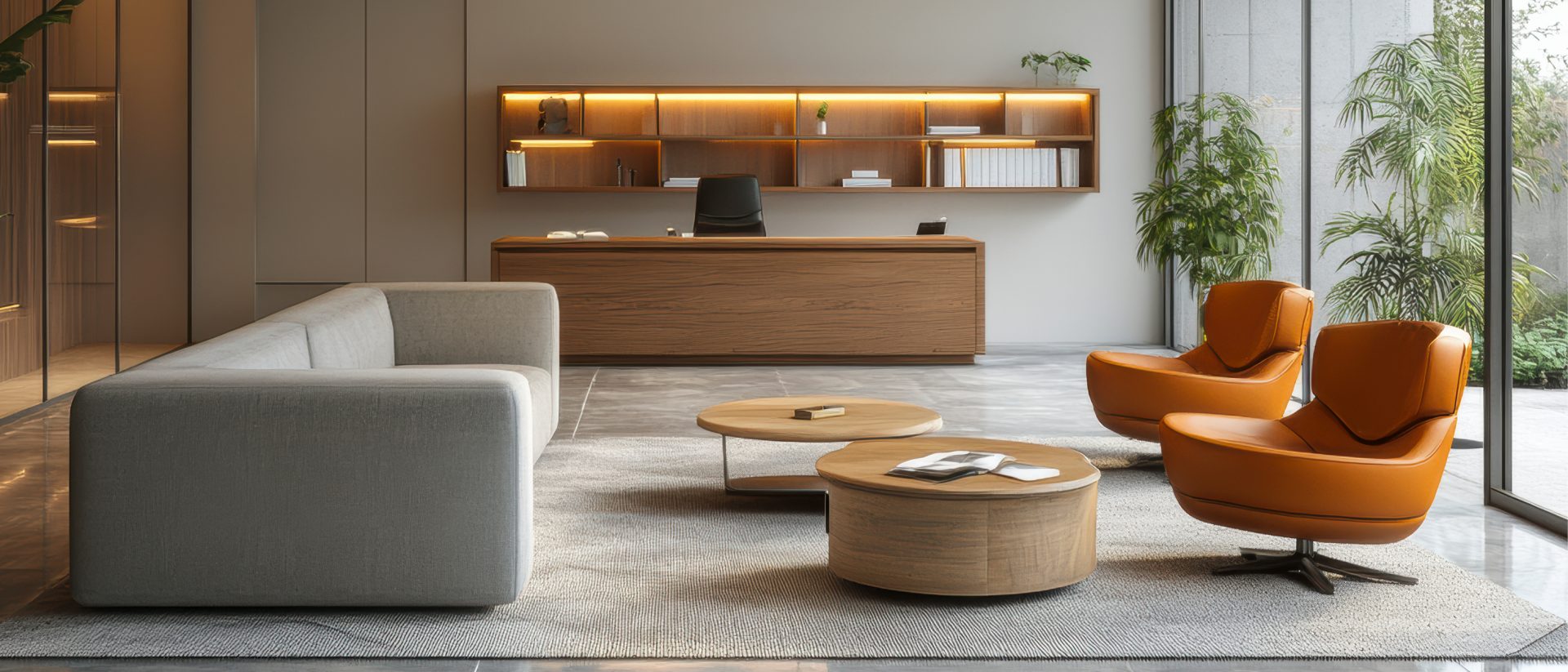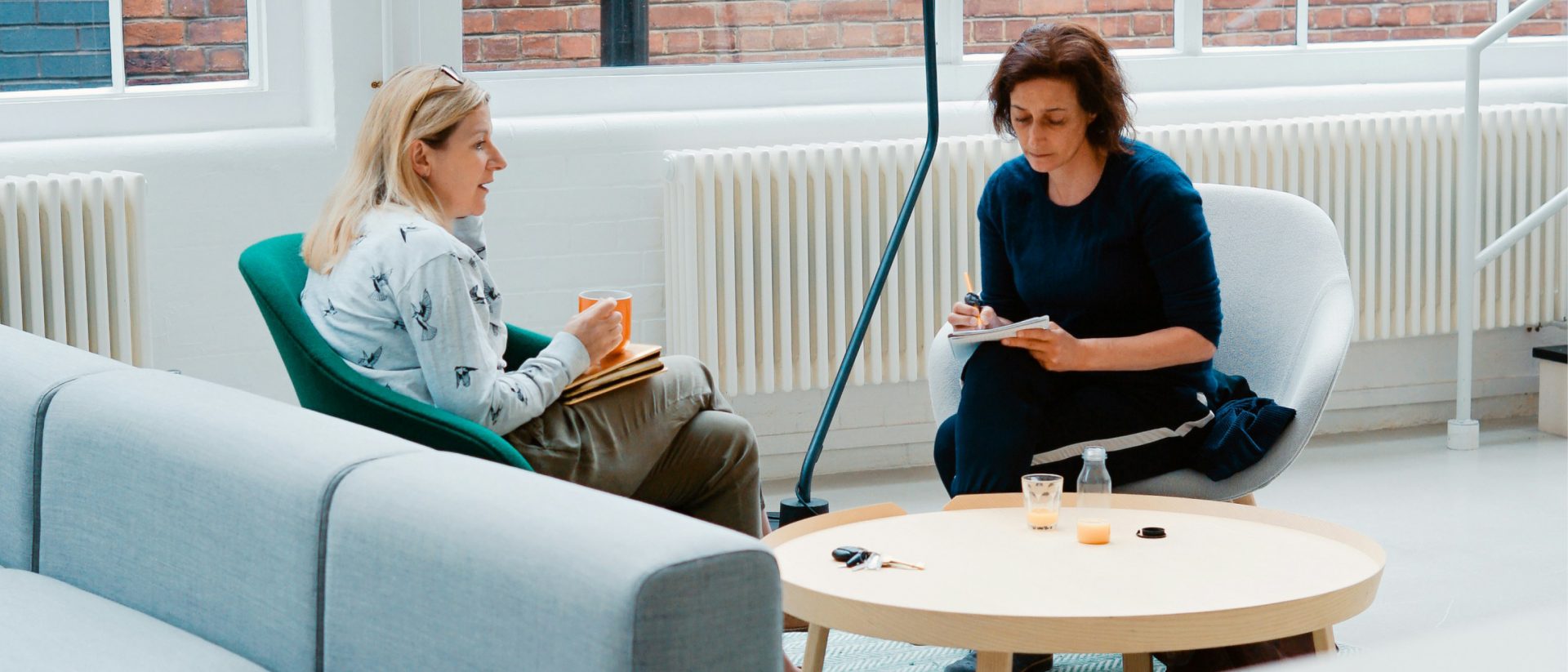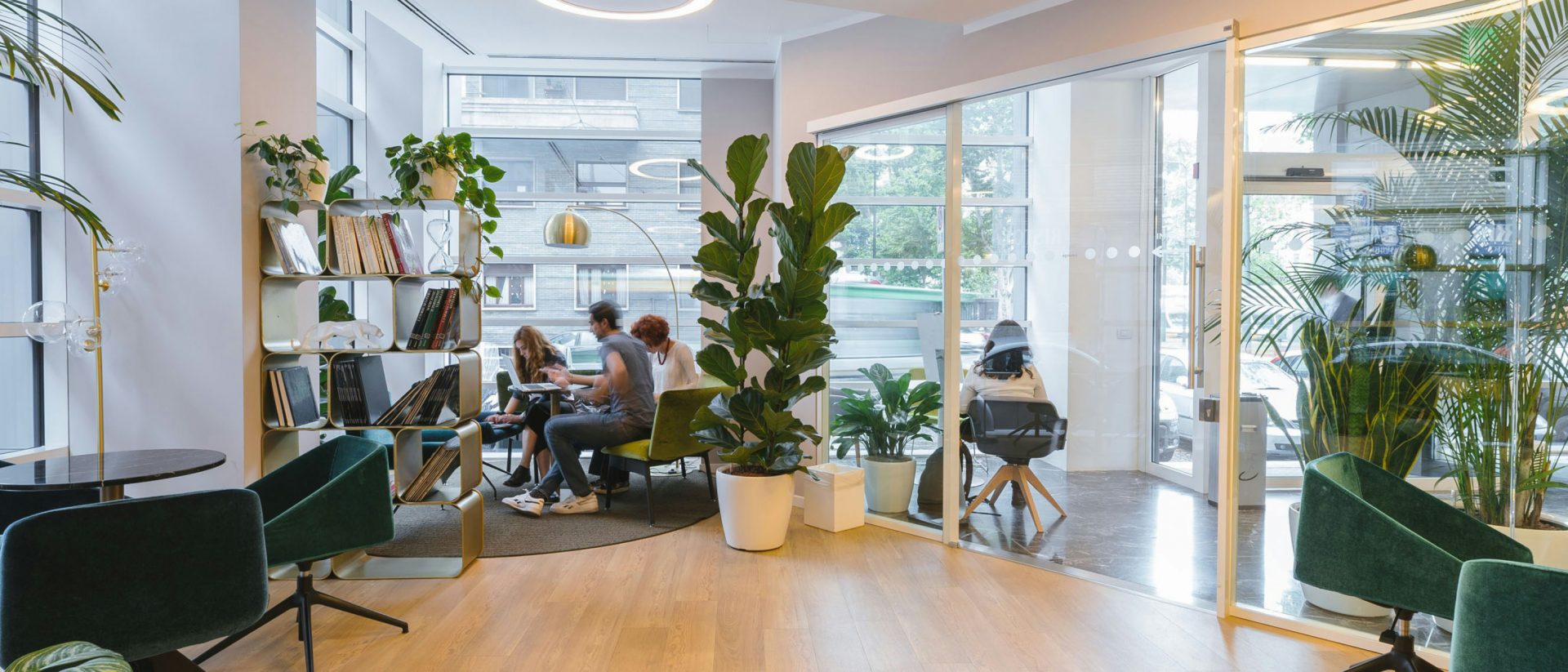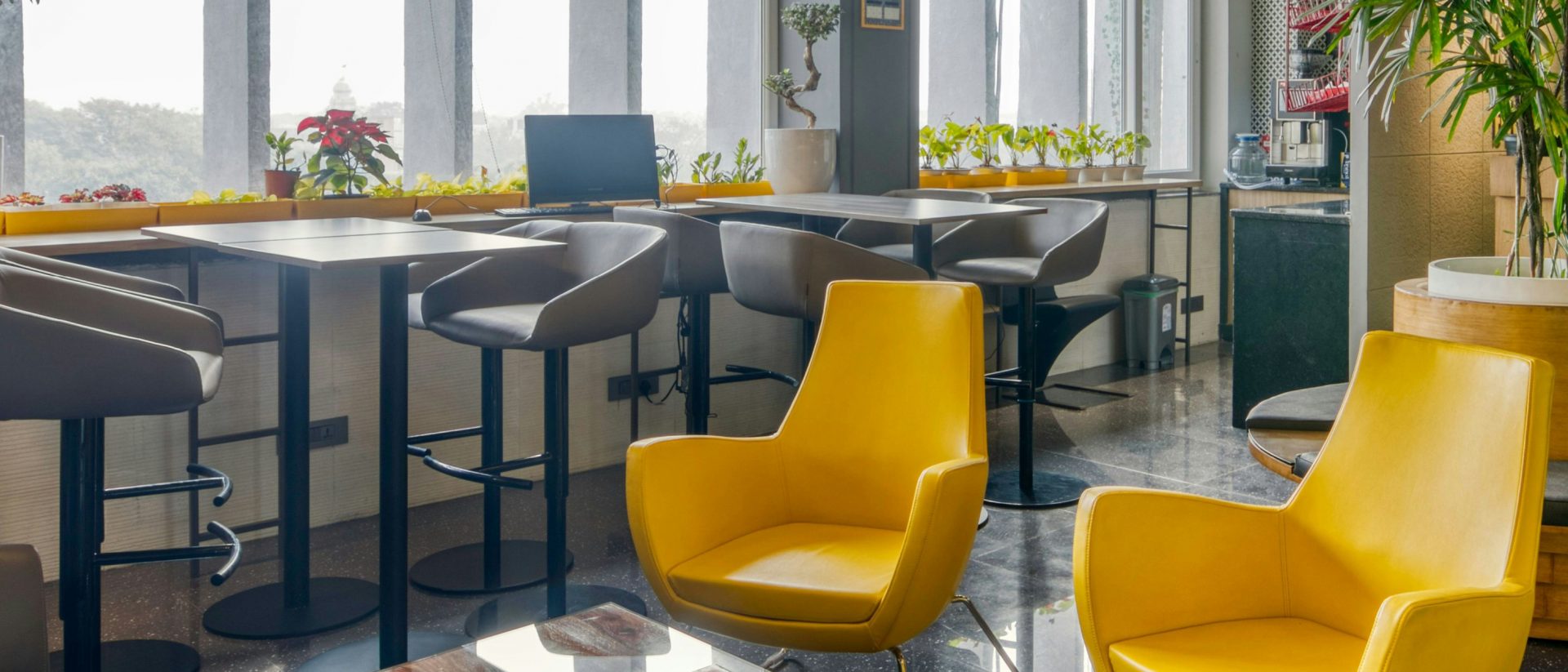Sustainability in Workspace Design: Beyond Greenwashing
written by OLG
As businesses and organisations increasingly recognise the importance of environmental responsibility, the demand for sustainable workspace design has grown. Sustainability, in this context, is not just about implementing green aesthetics and practices or following trends, it’s about creating spaces that are environmentally responsible, resource-efficient, and supportive of the people who use them.
The Principles of Sustainable Workspace Design
Sustainable workspace design involves several key principles that prioritise environmental impact, health, and productivity. Let’s explore some of these principles:
1. Biophilic Design: Connecting People with Nature
Biophilic design, the concept of integrating natural elements into built environments, plays a central role in sustainable workspace design. By bringing elements like plants, natural lighting, water features, and natural textures into the office, biophilic design creates a sense of connection to nature. This has been shown to improve employee well-being, reduce stress, and increase productivity.
Incorporating biophilic elements doesn’t have to be complex. Even simple additions, like plant walls or views of green spaces, can significantly enhance the workspace and improve the mental and physical health of employees.
2. Layout Considerations: Flexibility and Functionality
Workspace design must accommodate modern workstyles, including hybrid work arrangements. A flexible layout is crucial to meeting the diverse needs of today’s workforce. Employees who work both in-office and remotely need spaces that can adapt to varying tasks, whether it’s quiet zones for deep focus, collaborative areas for teamwork, or communal spaces for socialising.
Spaces should be modular and flexible, allowing for easy reconfiguration as work patterns evolve. This reduces the need for constant remodelling, which can be resource-intensive and wasteful. A flexible design also enhances energy efficiency by promoting multi-functional spaces that are used more effectively.
3. Greener and More Energy-Efficient Spaces
Designing with sustainability in mind includes optimising energy use. By selecting energy-efficient appliances, lighting, and HVAC systems, companies can drastically reduce their environmental footprint. Maximising natural light reduces the reliance on artificial lighting during the day. Solar panels, energy-efficient windows, and smart thermostats can all play significant roles in ensuring that workspaces are not only functional but also energy-conscious. Integrating energy-efficient systems into the design ensures that the workspace contributes positively to the environment rather than detracting from it.
4. Material Selection: Sustainable Sourcing and Lifecycle
One of the most impactful ways to create a sustainable workspace is by carefully selecting materials. Sustainable materials may significantly reduce the carbon footprint of an office. The lifecycle of these materials is an important consideration. Sustainable design involves selecting materials that are durable, easy to maintain, and recyclable at the end of their life.
Material sourcing utilising local suppliers to reduce the carbon footprint associated with transportation is a key consideration. Materials that are renewable, biodegradable, or upcycled offer additional benefits, ensuring that the workspace’s environmental impact is minimised throughout its lifespan.
5. Recycling, Reducing, and Reusing
Workspaces should be designed with a commitment to reducing waste and supporting recycling programs. This philosophy means including facilities for easy waste separation and disposal, as well as reusing materials when possible. Incorporating reclaimed elements like, upcycled furniture, and repurposed building materials illustrates a commitment to sustainability.
Modular and adaptable furniture not only reduces waste by offering long-term solutions but also supports a flexible office layout. Furniture that is durable, repairable, and designed for easy disassembly ensures that it can be reused or recycled at the end of its life.
6. Healthier Environments for Physical and Mental Well-being
Sustainability in workspace design is not just about the environment; it’s also about creating spaces that foster well-being for employees. Research focussing on the safety of employees suggests that a healthy workspace promotes both physical and mental health, supporting the overall productivity and satisfaction of the team.
Key considerations include ergonomic furniture that supports healthy posture as well as spaces designed to reduce noise pollution and enhance air quality. Natural light, fresh air, and materials with low environmental toxins all contribute to a healthier environment.
Quiet zones for deep focus, on the other hand, allow employees to engage in uninterrupted work, promoting mental clarity and reducing stress. These spaces can be enhanced with calming elements like plants, soft furnishings, and soothing colours.
7. Delivering on the Promise: Accountability and Action
Ultimately, sustainable workspace design requires a commitment to the principles of reduce, recycle, and reuse. It is not enough to simply claim to be environmentally friendly companies must actively measure and track their sustainability goals. This involves integrating transparent practices that reduce waste, recycle materials, and minimise energy use across the entire lifecycle of the workspace.
By incorporating elements of nature, overall well-being improves by up to 15%.
Companies should also be proactive in seeking out third-party certifications, these certifications offer accountability and help businesses demonstrate their commitment to both environmental and employee well-being.
A Sustainable and Supportive Work Environment
Sustainability in workspace design goes far beyond aesthetics or greenwashing. True sustainable design is a wholistic approach that considers the environment, the needs of employees, and the long-term impact on society. Research suggests that a workspace that is sustainable is not just better for the planet, it’s better for the people who work there.
By embracing principles like biophilic design, flexible layouts, sustainable materials, and energy efficiency, businesses can create environments that foster both productivity and well-being. Ultimately, a sustainable workspace is a workspace that supports the future of both the earth and the people who inhabit it.
Click to download a printable PDF.
